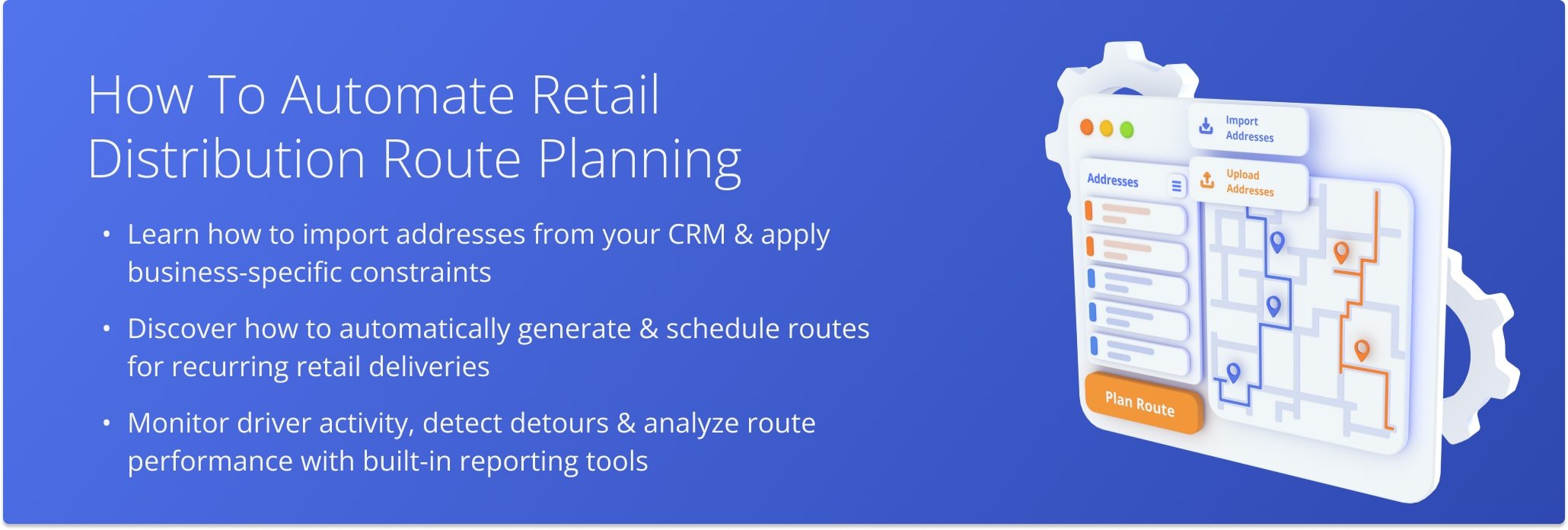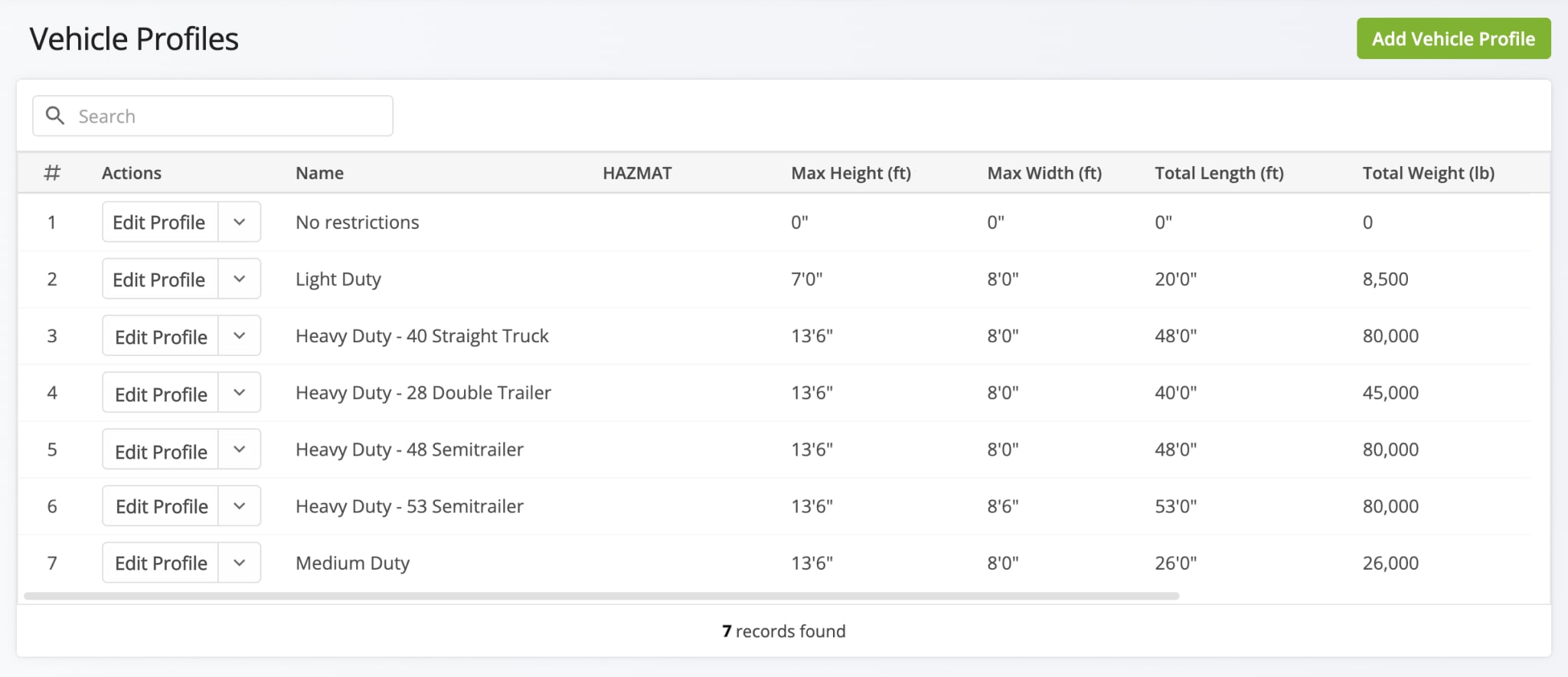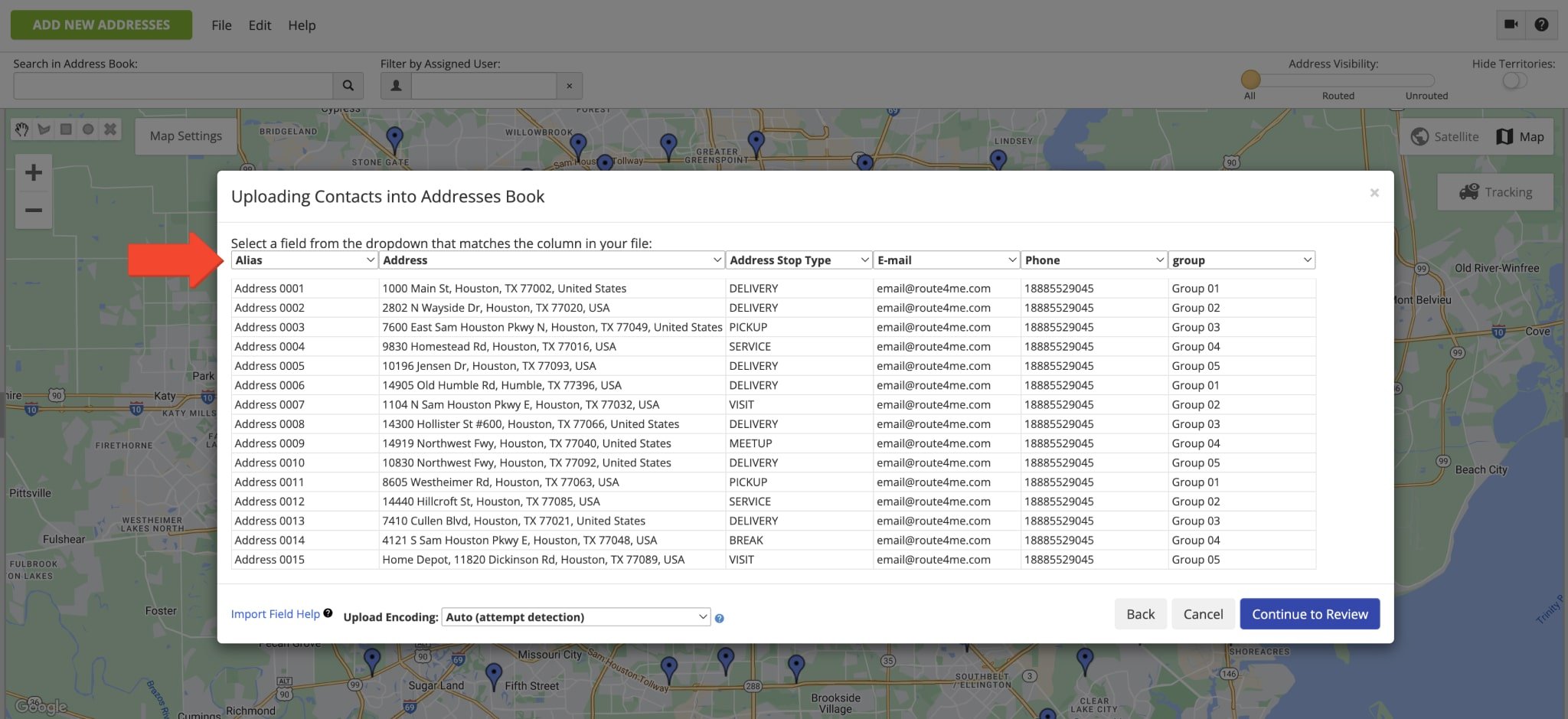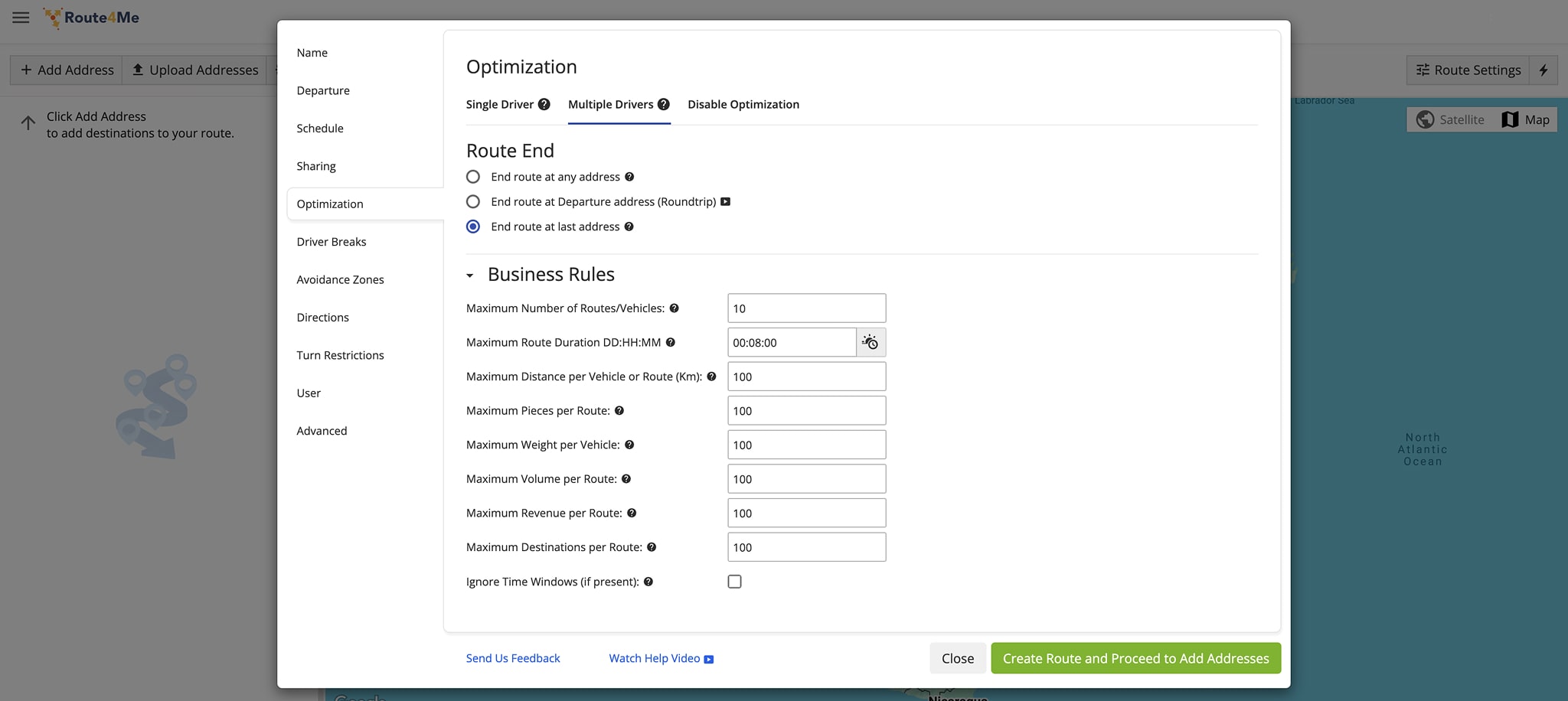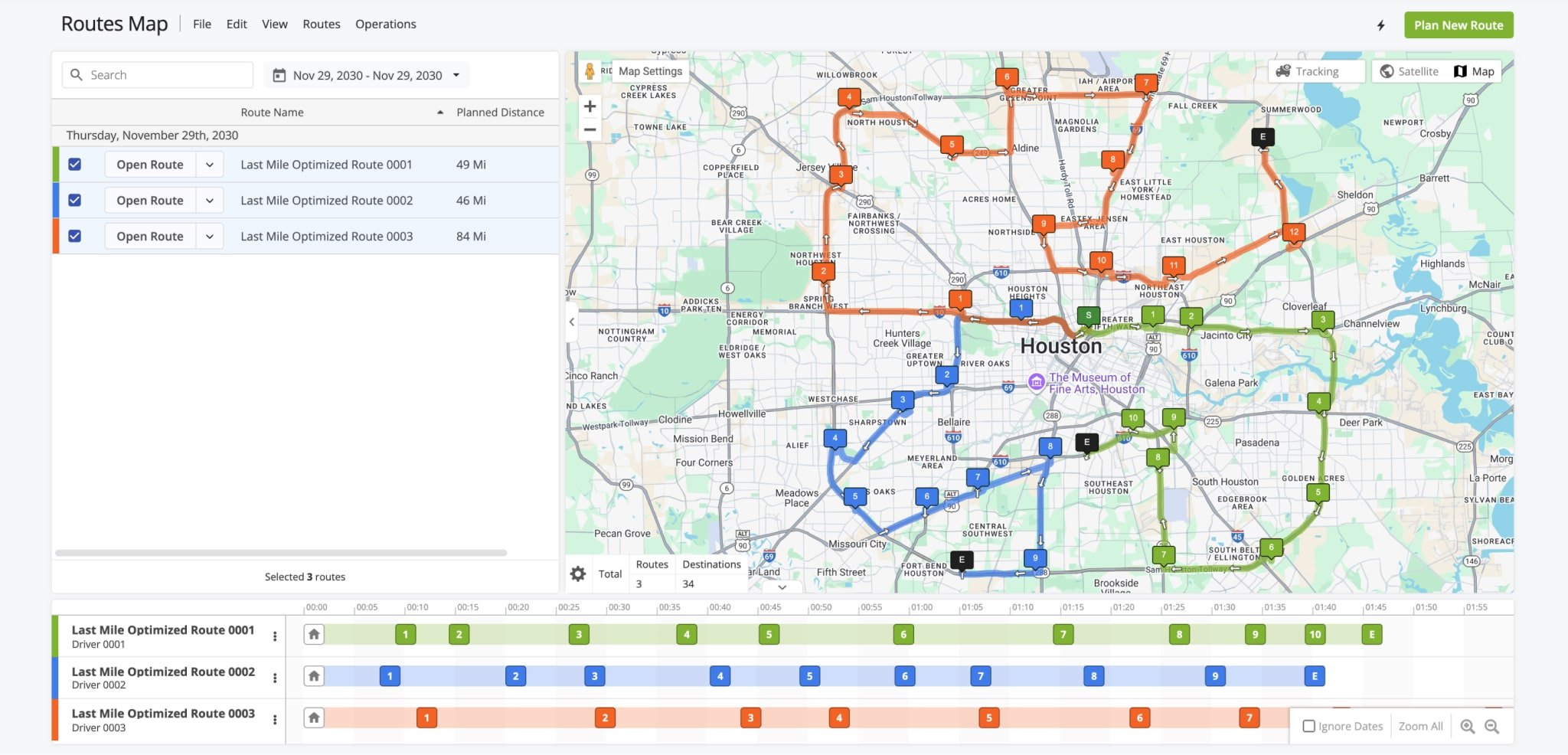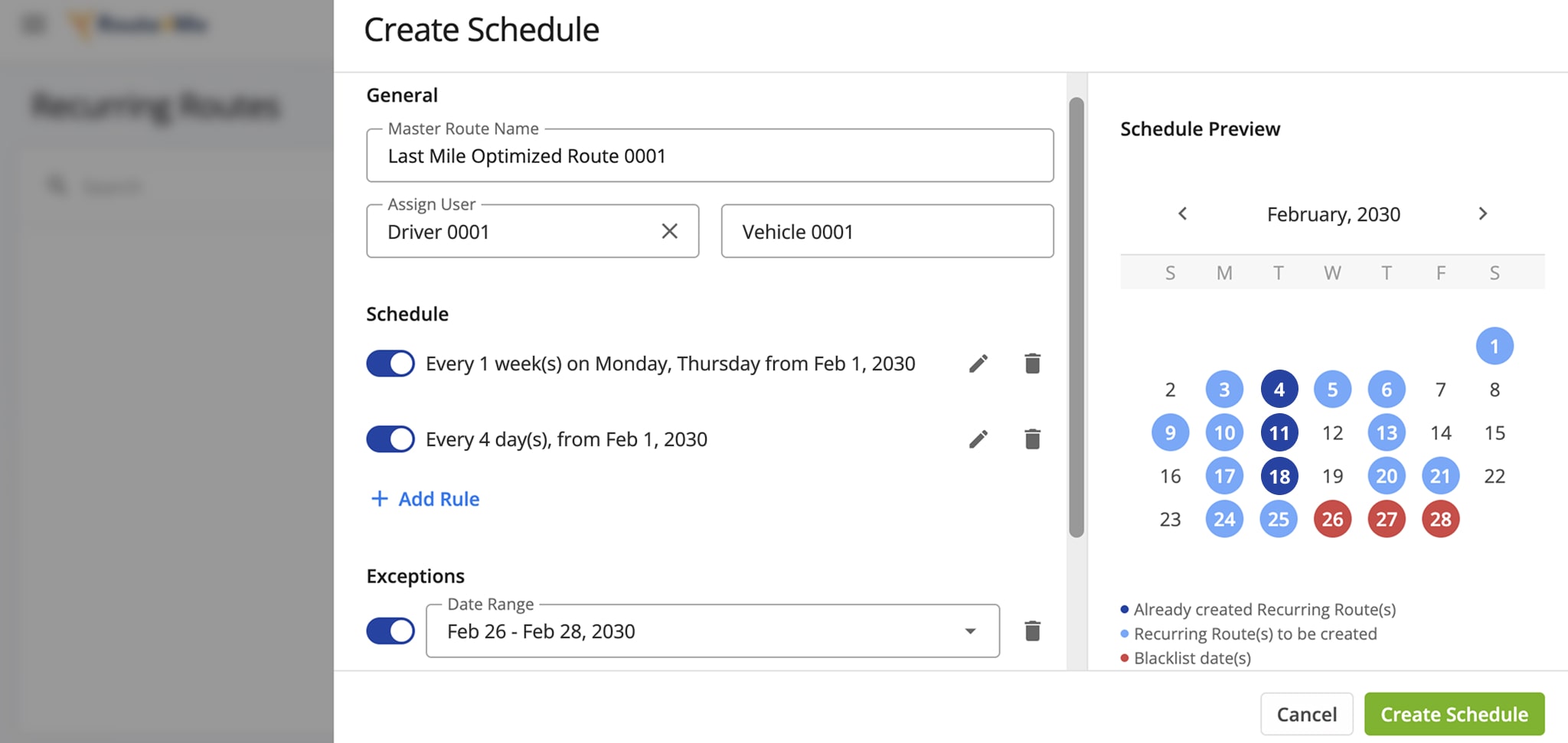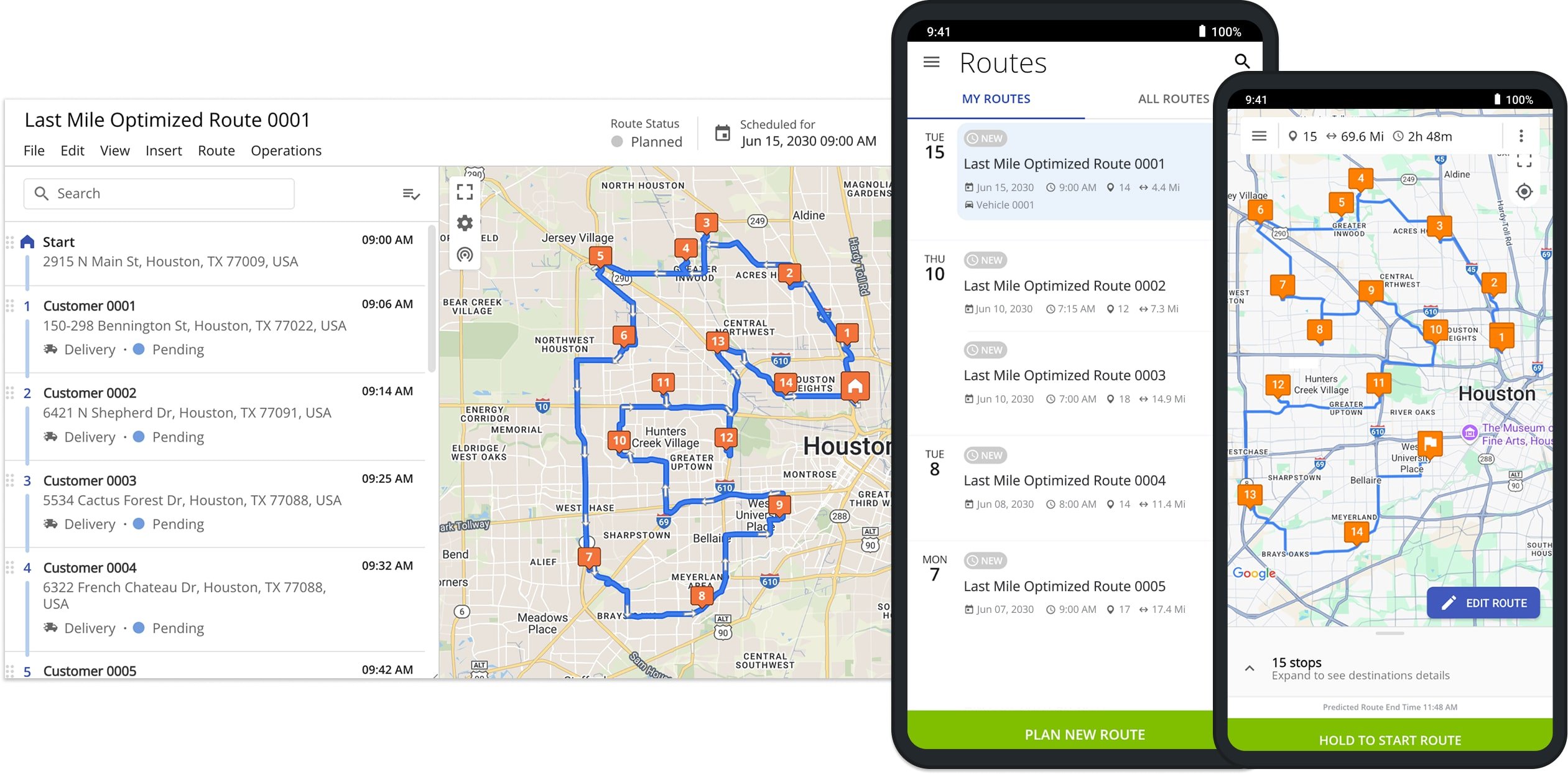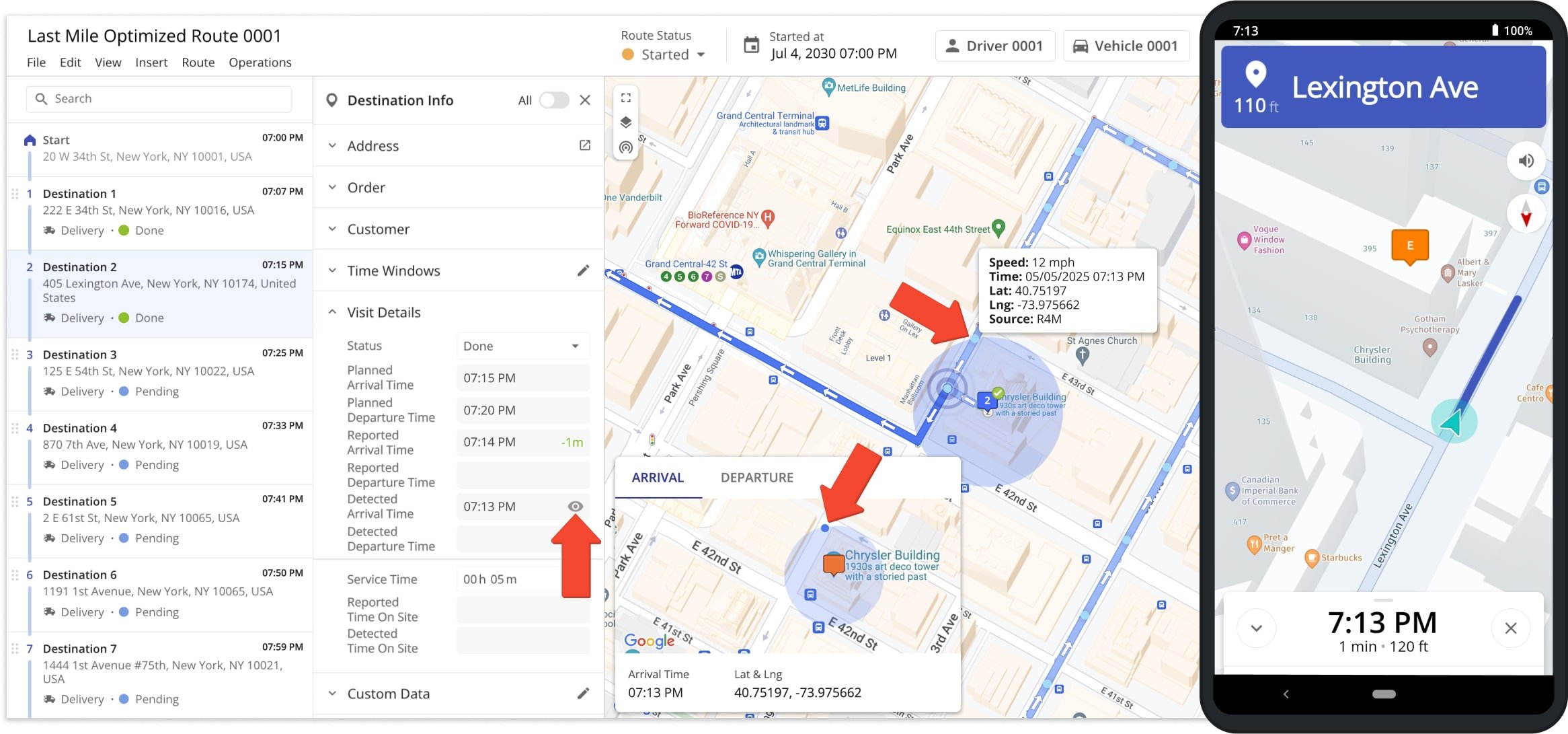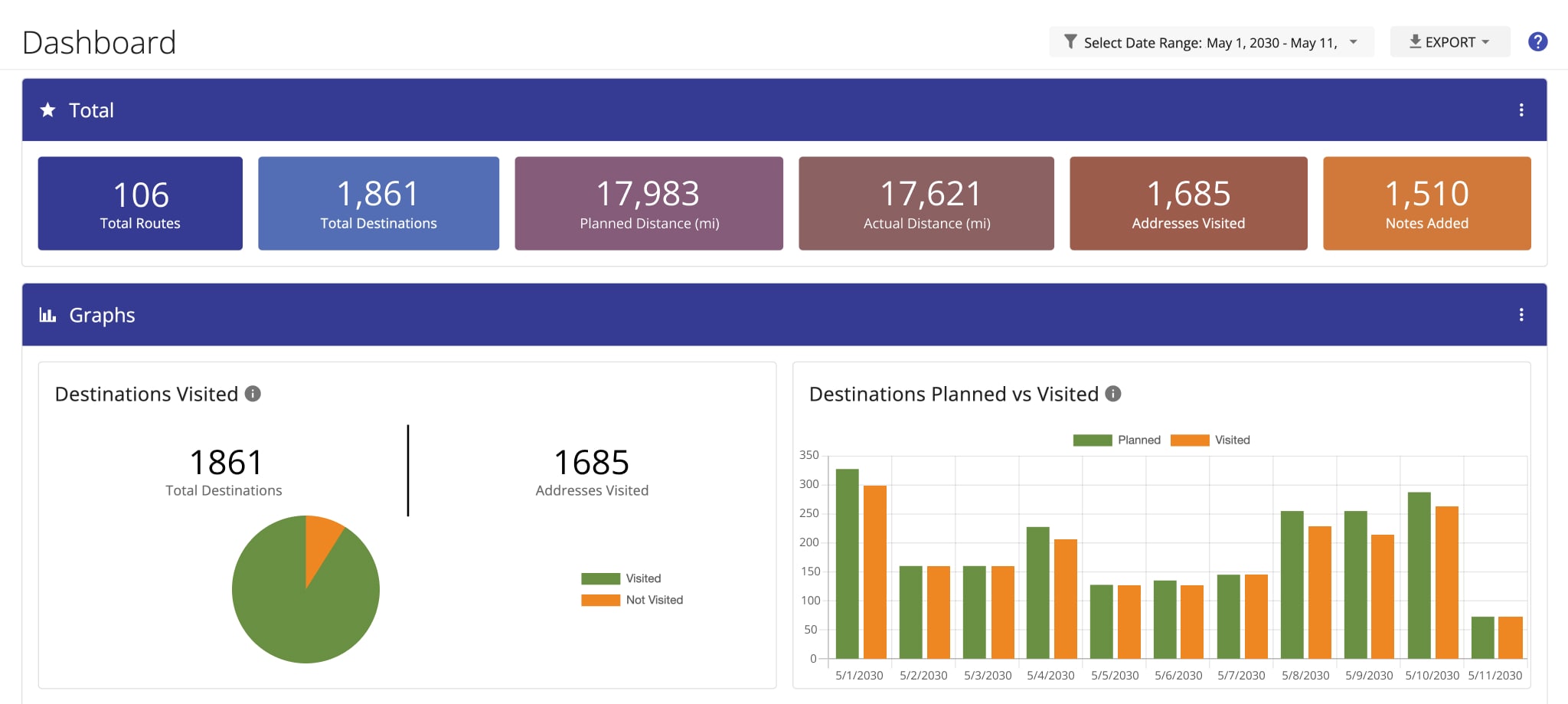How To Automate Retail Distribution Route Planning
Retail distribution is a repetitive logistics process, making it ideal for automation with advanced route planning and routing software. To keep up with retail industry trends, many wholesale distributors are adopting these tools to reduce costs and streamline delivery operations. With platforms like Route4Me, you can plan optimized routes, schedule recurring deliveries, and monitor driver performance in minutes. Route automation simplifies distribution while improving compliance and visibility across your logistics network. Learn more in this guide.
Table of Contents
What Is Retail Distribution?
Retail distribution is the process of transporting merchandise from a manufacturer (direct distribution), freight facility, or storage location to a retailer, wholesaler, distribution center, fulfillment center, or transportation hub.
Beyond moving goods from point A to point B, it also includes backhauling, which involves returning merchandise from point B back to point A.
Typically, retail distribution relies on large commercial vehicles such as trucks. Key challenges for distributors include efficient backhauling and optimizing truck routing to reduce costs and save time.
Truck Routing Benefits For Retail Distribution
Truck routing software helps optimize routes for commercial vehicles. and simplifies truck routing management. With optimized truck routing, distributors and suppliers can:
- Cut costs on fuel and reduce windshield time
- Plan the shortest, fastest, and most cost-efficient truck routes
- Schedule routes and automate route planning
- Track truckers on a live map
- Improve collaboration and communication
- Get an overview of the entire distribution operation with a few clicks
- Track relevant logistics KPIs and metrics
Automate Retail Distribution Route Planning in 8 Simple Steps
If you’ve already insourced your retail distribution, you can use the Route4Me Route Planner to automate route planning for repetitive distribution orders:
1. Create Profiles For Your Commercial Fleet Vehicles
To ensure your trucks stay on commercially approved routes, create a profile for each truck in your commercial fleet. With the Route4Me truck routing software, you can add trucks individually or import vehicle profiles in bulk from your telematics solution.
2. Import Addresses From Customer Management Platforms
Sync your digital address book with the Route4Me truck routing software. You can import addresses using multiple methods, including:
- Spreadsheets
- Cloud storage
- Google Drive
- Dropbox and similar tools
- Customer relationship management (CRM) systems
- eCommerce platforms such as Shopify, Magento, WooCommerce, etc.
- Copy-paste
3. Input Route Optimization Constraints For Your Retail Distribution Routes
After importing your addresses, map them into optimized truck routes. Route4Me’s RoutePlanner lets you apply constraints and business rules to ensure routes meet your distribution needs, such as:
- Customer availability and schedules
- Truck loading and carrying capacity
- Cubic volume
- Number of boxes per car
- Number of available truck drivers
- Number or depots
- Maximum truck route distance
4. Automatically Create Optimized Retail Distribution Routes
Once all route optimization constraints are set in the truck routing software, you can generate the shortest and fastest routes tailored to your business needs.
Be sure to assign one of your trucks to the route to ensure it only travels on commercially-approved roads and complies with traffic, weight, and height regulations.
5. Schedule Retail Distribution Optimized Routes
If your routes remain largely consistent, save time by using the optimized routes from the previous step as route templates. This eliminates repeated address mapping and fine-tuning. Set it once, and the template replicates all your settings.
Then, create flexible schedules for each template route as needed, such as daily, weekly, odd days, or even days.
6. Dispatch Routes To Drivers’ Route Planner Apps With Truck GPS Navigation
After scheduling your recurring routes, assign drivers so they can access and navigate them on the Route4Me iOS or Android route planner app. The app includes voice-guided navigation for trucks, keeping drivers safe and focused on the road.
7. Track Truck Drivers On A Live Map
Once your truck drivers start navigating a route, you can track drivers simultaneously on a live map or review their progress afterward in a GPS tracking video.
If you can’t monitor them constantly, the Route4Me truck routing software can detect unauthorized route detections dynamically. Whenever a truck driver takes an unnecessary detour, wasting time and fuel, you’ll be notified immediately.
8. Analyze Logistics KPIs And Truck Driver Performance Metrics
Finally, you can track the results of your efforts. On Route4Me’s report dashboard, analyze relevant logistics KPIs and driver performance metrics to gain valuable insights into the efficiency of your retail distribution operations. These reports let you compare metrics, such as:
- Planned vs actual route distance
- Planned vs visited stops
- Service time
- The total number of planned routes
- Planned vs actual driven miles
- Planned vs actual time
If you’re ready to put route planning for retail distribution on autopilot and experience automation, sign up for the Get Started today. No credit card required!
Last Updated:
